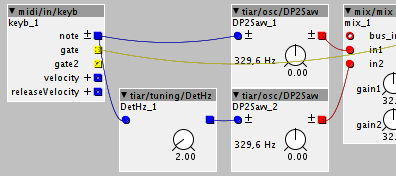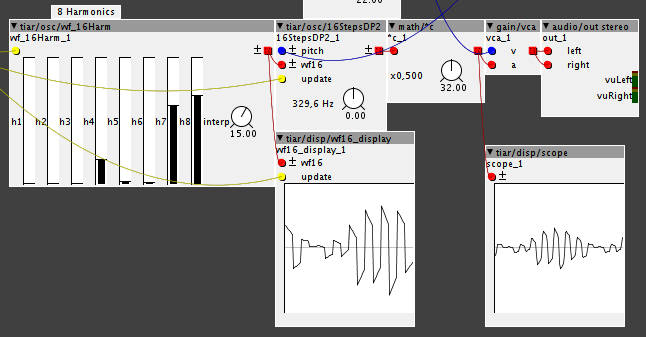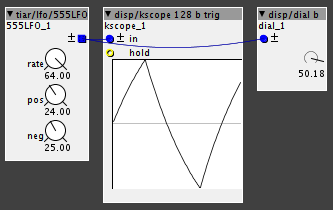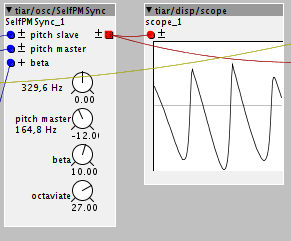Object: tiar/tuning/DetHz
see the help patch: menu: Help -> Library -> Community -> tiar -> tuning ->DetHz
An old trick to get the fat synth sound consists in slightly detuning oscillators.
With the axoloti, it is often achieved by ctl-shift mouse drag over the pitch knob of the oscillator (or by selecting the knob and typing in accurate values thanks to @lis0r ). This is pitch detuning.
A slight detuning generates that slow, smooth and delightful chorusing / doubling effect.
The problem with pitch detuning is that the chorusing rate increases in the higher range. It is often too fast and more fuzzy than smooth.
DetHz allows to have a constant chorusing rate all over the keyboard. It adds a frequency offset - as opposed to a pitch offset - to the control signal:

Both oscillators are tuned exactly the same way, but DetHz modifies the pitch control of DP2Saw_2. DP2Saw_2 is "frequency detune" relative to DP2Saw_1.
Try the help patch: Help -> Library -> Community -> tiar -> tuning ->DetHz and play notes from the lower end of the keyboard to the higher end.
Here are the approximate detuning cycle/rates you will get with the control parameter:
- 1: 8s cycle
- 2: 4s cycle
- 8: 1Hz
- 64: 8Hz
[EDIT 27 feb 2018] Added an inlet to modulate the offset ie control the beat/chorusing speed.






